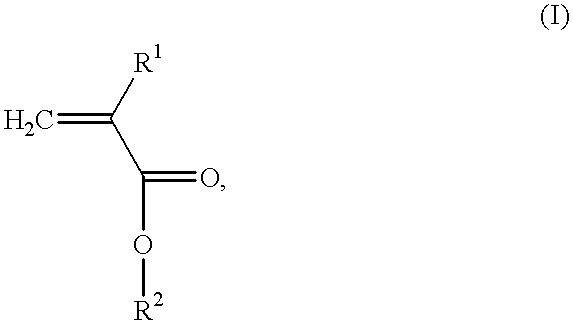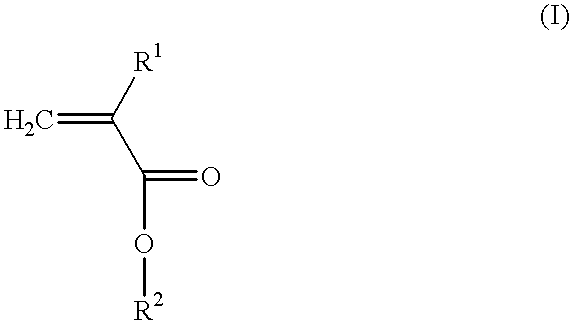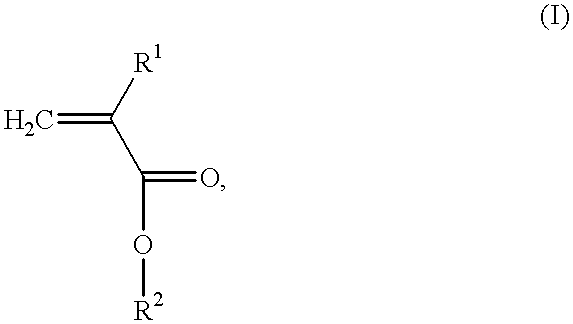Compositions containing elastomeric ethylene or (meth)acrylic ester copolymers
a technology of elastomeric ethylene and acrylic ester, which is applied in the field of compositions containing elastomeric ethylene or (meth)acrylic ester copolymers, can solve the problems of difficult preservation of elastomers in a package, product form, and excessive amount of parting agent,
- Summary
- Abstract
- Description
- Claims
- Application Information
AI Technical Summary
Problems solved by technology
Method used
Image
Examples
example 1
[0070] To a Type 6 Mixer at 245.degree. C. and blanketed with nitrogen were charged 40.0 g E / 72MA and 10.0 g poly-.epsilon.-caprolactone diol ("PCL diol") (MW.about.2000, Polysciences, cat. # 9694). With the ram down, the polymers were mixed at 75 rpm for 2 min. Then 0.58 ml of a 10% (w / w) Ti(O-n-bu).sub.4 solution in xylenes was injected into the melt through the center opening with the ram up, under a blanket of nitrogen, gradually enough to disperse the reagent as well as possible. The ram was again closed, maintaining the nitrogen blanket. The torque began to rise rapidly soon after catalyst addition, peaking at 990 m-g about 4 min after the addition, then dropping rapidly as the material gelled and became a crumbly solid. The mixing was terminated and the polymer removed 5 min after the start of catalyst addition.
example 2
[0071] A similar experiment to Example 1 was conducted with .about.9000-MW poly-.epsilon.-caprolactone ("PCL") (Polysciences, cat. # 19561, .eta..sub.inh=0.272 in toluene) in place of the 2000-MW PCL diol. The initial torque of the mixture was .about.93 m-g. Six min after catalyst addition, the torque began to rise from .about.70 m-g gradually to a peak of .about.185 m-g at 13 min after catalyst addition, at which time the mixing was terminated and the product removed. The polymer melt remained transparent throughout the mixing.
example 3
[0072] Another similar experiment to Example 1 was conducted with .about.30,000-MW PCL (Polysciences cat. # 7039), and no torque change was observed. The initial torque was 60-90 m-g, and remained primarily flat at 60 m-g throughout the reaction. The melt was initially transparent-to-translucent and, at the end of the reaction, transparent.
PUM
| Property | Measurement | Unit |
|---|---|---|
| weight percent | aaaaa | aaaaa |
| Tm | aaaaa | aaaaa |
| Tm | aaaaa | aaaaa |
Abstract
Description
Claims
Application Information
 Login to View More
Login to View More - R&D
- Intellectual Property
- Life Sciences
- Materials
- Tech Scout
- Unparalleled Data Quality
- Higher Quality Content
- 60% Fewer Hallucinations
Browse by: Latest US Patents, China's latest patents, Technical Efficacy Thesaurus, Application Domain, Technology Topic, Popular Technical Reports.
© 2025 PatSnap. All rights reserved.Legal|Privacy policy|Modern Slavery Act Transparency Statement|Sitemap|About US| Contact US: help@patsnap.com



